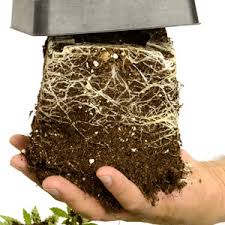
Mastering the Art of Transplanting Medical Cannabis Plants:
Transplanting is a critical process in the cultivation of medical cannabis plants. It involves moving a plant from one growing medium or container to another, providing it with fresh soil or a larger space to continue its growth. This article will guide you through the important aspects of transplanting medical cannabis plants for successful cultivation.
Why Transplant Cannabis Plants?
Transplanting offers several benefits for medical cannabis plants:
- Enhanced Root Development: Transplanting allows the roots to expand into fresh soil or a larger container, promoting healthier and stronger root growth.
- Improved Nutrient Uptake: Fresh soil or growing medium provides a renewed source of nutrients, ensuring optimal nutrient uptake for the plants.
- Preventing Overcrowding: Transplanting helps prevent overcrowding of roots, which can lead to stunted growth and decreased yields.
When to Transplant Cannabis Plants
Timing is crucial when it comes to transplanting cannabis plants. The ideal time to transplant is during the vegetative stage when the plants are actively growing and have not yet started flowering. Transplanting during this stage minimizes stress on the plants and allows them to quickly recover and establish new roots.
Transplanting Process
Follow these steps for a successful cannabis plant transplant:
Step 1: Preparation
- Choose the Right Time: Ensure the plants are in the vegetative stage and have a healthy root system before initiating the transplant.
- Prepare the New Growing Medium: Select a suitable growing medium or soil mix for the new container. Ensure it is well-draining, nutrient-rich, and pH-balanced.
Step 2: Watering
- Water the Plants: Thoroughly water the plants a day or two before the planned transplant. This ensures that the roots are hydrated and the soil is moist but not saturated.
Step 3: Transplanting
- Select the New Container: Choose a container that provides ample space for the plant’s root system to grow. Ensure it has drainage holes to prevent waterlogging.
- Prepare the New Container: Fill the new container with the chosen growing medium, leaving enough space at the top for watering.
- Gently Remove the Plant: Carefully remove the plant from its current container, holding it by the base of the stem or using a transplanting tool to avoid damaging the roots.
- Place the Plant in the New Container: Make a hole in the new growing medium and gently place the plant’s root system into the hole. Ensure the plant is positioned at the same depth as before.
- Fill the Container: Gently fill the container with the growing medium, ensuring the roots are covered and supported. Press the medium lightly to secure the plant in place.
Step 4: Aftercare
- Water the Transplanted Plants: After transplanting, give the plants a thorough watering to settle the growing medium around the roots.
- Monitor and Maintain: Place the plants in a suitable environment with adequate light, temperature, and humidity. Monitor their progress and provide regular care, including watering and nutrient supplementation.
Transplanting Tips
Consider these tips to ensure a successful cannabis plant transplant:
-
- Handle with Care: Be gentle when handling the plants to minimize root damage or stress.
- Avoid Overwatering: After transplanting, be cautious not to overwater the plants, as this can lead to root rot or other issues. Allow the growing medium to dry slightly between watering.
- Provide Support: If the plants are tall or top-heavy, use stakes or trellises to provide support and prevent bending or breakage.
- Maintain Environmental Conditions: Ensure the transplant area provides optimal environmental conditions, including appropriate lighting, temperature, and humidity levels.
- Monitor for Transplant Shock: Transplanting can temporarily shock the plants, causing them to show signs of stress such as wilting or yellowing leaves. Monitor the plants closely and provide extra care during this period until they recover.
- Avoid Disturbing the Root Zone: Once transplanted, minimize disturbances around the root zone. Avoid excessive handling or disturbing the growing medium to allow the roots to establish and grow undisturbed.
Frequently Asked Questions (FAQs)
Q1: When is the best time to transplant cannabis plants?
Transplanting is best done during the vegetative stage before the flowering phase begins.
Q2: How often should I water newly transplanted cannabis plants?
Water the plants thoroughly after transplanting, and then monitor the moisture levels. Water when the top inch of the growing medium feels dry.
Q3: Can I transplant cannabis plants during the flowering stage?
It is generally not recommended to transplant during the flowering stage, as it can cause stress and impact bud development.
Q4: What size container should I use for transplanting cannabis plants? Choose a container that allows for ample root space, typically one or two sizes larger than the previous container.
Q5: How long does it take for transplanted cannabis plants to recover?
Transplanted cannabis plants usually recover within a week or two if provided with optimal care and environmental conditions.
Q6: Can I transplant outdoor-grown cannabis plants indoors?
Yes, you can transplant outdoor-grown plants indoors, but ensure the new environment meets their specific lighting, temperature, and humidity requirements.
Conclusion
Transplanting cannabis plants is a crucial step in their cultivation journey. By following the appropriate techniques and guidelines, growers can provide their medical cannabis plants with a fresh start, promoting healthy root development, improved nutrient uptake, and overall plant vigour. Remember to choose the right time, handle the plants with care, and provide optimal aftercare for a successful transplant. With proper attention and care, your transplanted cannabis plants will thrive and reward you with robust growth and a bountiful yield.

